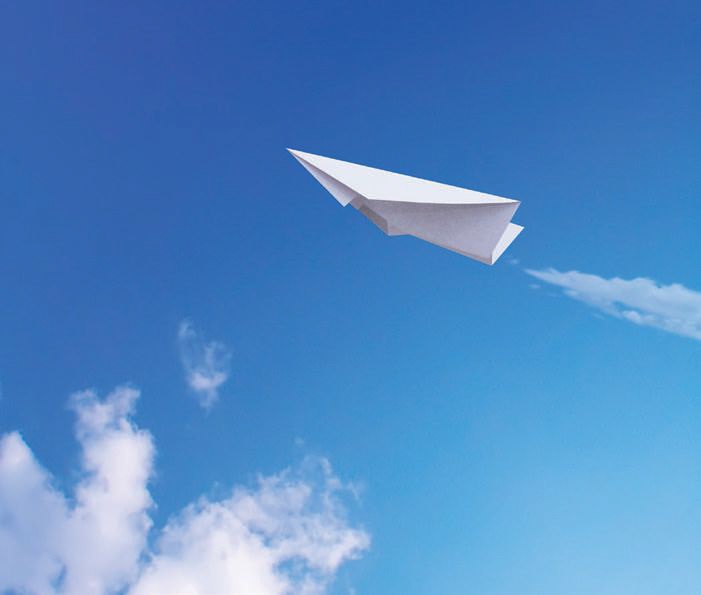Flying high with sampling
Evan Zabawski | TLT From the Editor July 2018
Some tasks are much easier said than done.

Whether folding a paper airplane or taking an oil sample, reading instructions or watching a demonstration can only help so much. What matters more is care and practice.
Taking oil samples is a relatively simple task, but that is not the same as saying the task is easily done. In fact, the simplicity of the task lends itself to allowing significant variance between people performing the task and, therefore, a reasonable chance for variability or error in the data from different samples.
The foundation to any condition-based monitoring program is good data, and for in-service fluid analysis that begins with a well-pulled sample. The steps are simple: wipe, flush, fill, cap and send. As in: wipe the area around the sampling valve, flush sufficient fluid through valve and tubing, fill the sample bottle, cap the bottle and then send the sample to the lab with properly completed paperwork.
What is missing from the above description is just how much of each step is the right amount. How much wiping, how much flush volume, how much to fill the sample bottle and how much information is required on the sample label/paperwork?
This is analogous to folding a paper airplane; the steps also are described simply, however, the execution is not always consistent. Try creasing a piece of paper lengthwise down the middle, then fold down the top corners so they meet, next fold the outside edges of the paper inward so that the edges align with the first crease and lastly flip the paper over and repeat the last fold. Now throw it; does it fly well? If you try again with a fresh sheet of paper does the second paper airplane fly equally well? Does it veer in a completely different direction?
For ease, this column in the print and
digital versions of TLT reproduces the fold lines to act as a guide, but chances are even following those will not guarantee a consistent outcome for all those that try. Even suggesting that the folds be made as crisply as possible will not necessarily improve flight characteristics. The step that seems to matter the most is the symmetry of each pair of folds, which results in a well-balanced finished product.
Reading instructions or watching a demonstration can only help so much; what matters more is care and practice. The same can be said for oil sampling; proper care helps make the sample more representative of actual conditions, and practice improves the repeatability with every subsequent sampling.
Wiping can be construed as anything from a quick wipe, which sometimes aggravates the cleanliness to a complete and thorough wipe down to remove all traces of external contamination. The goal is to simply eliminate the chance that anything other than the sample will end up in the bottle, be it knocked by fluid flow or valve manipulation or brushed by a hand.
Flushing is generally understood to be a set volume, often cited as anywhere from three to 10 times the volume of static fluid between the sampling valve and the live fluid. Though it is a concrete value, it can be very difficult estimating this value in the field. The emphasis is simply that the flushing be sufficient enough to produce live fluid.
Filling the sample bottle hovers between providing enough sample for testing, yet enough headspace remaining in the bottle to allow for proper homogenization. Capping the bottle merely implies sealing the bottle immediately after filling to avoid ingression of any airborne contamination or moisture.
Most of the information needed to send the sample can be pre-populated from the previous sample. The most concerning piece of information is the run time on both the machine and lubricant, which can be discerned from as little information as the sample date or as precise as a Hobbs meter reading.
Just as anyone can fold a decent paper airplane, anyone can pull a good oil sample. Understanding the importance of each step leads to proper care, and practice hones the skills to make the task consistent and efficient.
Evan Zabawski, CLS, is the senior technical advisor for TestOil in Calgary, Alberta, Canada. You can reach him at ezabawski@testoil.com.